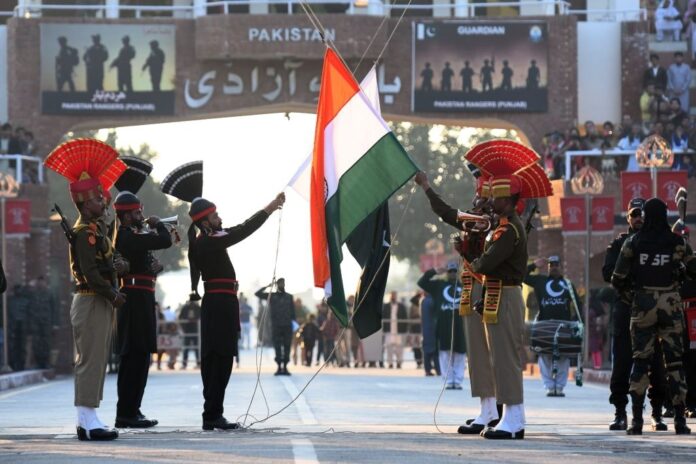LAHORE: At a time when the world was grappling with the fighting between Russia and Ukraine, war clouds nearly hovered over South Asia on March 9 when an Indian nuclear-capable cruise missile, launched “accidentally”, landed in Pakistan.
Experts are, therefore, urging both nuclear-armed neighbours to strengthen military to military level contacts to avoid recurrence of such incidents.
Anadolu Agency takes a look at past military confidence-building measures (CBMs) and their utility to maintain a semblance of peace in the region.
1965
Pakistan and India refrain from using air force in an open desert area of Rann of Kutch. Both sides decide to avoid targeting cities.
Maritime CBMs process takes place in the light of arbitration of the Sir Creek Boundary dispute between 1965 and 1968, resulting in the delimitation of a line of 403 kilometres (250 miles) that was demarcated later by joint survey teams.
1971
A dedicated hotline communication comes up between the director generals of military operations of both countries to carry important information in a short period.
1988
Agreement on not attacking each other’s nuclear installations, including nuclear power and research reactors, fuel fabricators, uranium enricher, isotope separation, and reprocessing facilities.
1990
An agreement to set up a hotline between the director generals of military operations so they can talk every week for frequent communications.
1991
Ratification of an agreement on the prohibition of attack against nuclear facilities and an arrangement put in place to share information and exchange an updated list of nuclear sites on January 1 each year.
An agreement on advance notifications of military exercises, manoeuvres, and troop movements.
No military activity by land, naval, and air force within 5 kilometres (3.1 miles) of the international border.
A mandatory notification for exercises comprising two or more divisions.
A near Line of Control (LoC) notification for any exercises involving division level or above.
Division-level exercises are to be conducted only 25 kilometres (15.5 miles) away from the border.
1992
Both countries agree to update the annual exchange of nuclear lists to include details of the location of nuclear facilities.
They sign an agreement on the prevention of airspace violations.
Combat aircraft (to include fighter, bomber, reconnaissance, jet military trainer, and armed helicopter aircraft) will not fly within 10 kilometres (6.2 miles) of each other’s airspace including the air defense identification zone (ADIZ).
Unarmed transport and logistics aircraft including unarmed helicopters and air observation posts aircraft are permitted up to 1 kilometre (0.6 miles) from each other’s airspace including ADIZ.
Aerial survey, supply dropping, and rescue missions and flights less than 1 kilometre from each other’s airspace including ADIZ will provide advance notification to their air headquarters.
1993
A memorandum of understanding is signed on resumption of weekly hotline communication between director generals of military operations.
1999
Lahore Declaration is signed, which includes an agreement on the prevention of incidents at sea to ensure the safety of navigating naval vessels and aircraft belonging to both countries.
A memorandum of understanding on ballistic missile flight tests comes up, making it mandatory to provide a three-day notice before the commencement of a testing window. It prohibits launching from or targeting missiles within certain geographical proximity of the International Border and the Line of Control to ensure that the trajectory of the missiles neither transects nor is directed toward the same borders.
2003
The informal cease-fire along the LoC and actual ground position line along Siachen Glacier come up.
Joint patrolling along the international border and periodic flag meetings.
Prohibition of development of new forward posts.
2004
For the first time, Indias’ Border Security Force (BSF) and Rangers of Pakistan conduct their bi-annual meeting.
2005
Establishment of a link between the Indian Coast Guard and the Pakistan Maritime Security Agency.
Singing of an agreement on advance notice on ballistic missile tests. The 1999 memorandum of now becomes an agreement.
2007
The signing of an agreement on reducing the risk from nuclear weapons-related accidents, and it is reaffirmed for a five-year term until 2012.
2018
Indian military’s announcement of observing a cease-fire in disputed Kashmir during the month of Ramadan for the first time.
The terms of the 2003 cease-fire agreement are restored.
2021
A joint announcement by the director generals of military operations for reverting to the 2003 cease-fire agreement along the LoC.























